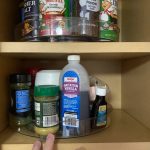This is a sponsored guest post.
Step stools are helpful equipment for helping toddlers advance to higher levels. A toddler step stool makes tasks easier and encourages independence, whether it’s for helping in the kitchen or cleaning their teeth.
However, similar to any tool intended for children, using a step stool demands some understanding and preparation. Below is your guide to utilizing toddler step stools within your household. Find out everything you need to know about toddler step stool safety to make sure you can use them without worry or injury.
Understanding Toddler Development
Before choosing a step stool, it’s helpful to understand the stage your child is at developmentally. Around the age of two, toddlers develop physical coordination, balance, and curiosity.
This is when they start wanting to do things “all by themselves.” Step stools provide a safe way for toddlers to independently satisfy this urge while promoting their fine motor skills and sense of independence.

Credit: Little Partners
Because they’re still learning about stability and balance, guidance and supervision are essential to help them use a stool safely.
Choosing the Right Step Stool
Toddler step stool safety is the most important aspect when making a choice, along with practicality. Never neglect these criteria because the wrong choice can lead to problems and even accidents.
- Height and Stability: Look for a stool that’s tall enough for your child to reach desired surfaces but not so tall that it becomes unstable. Stools with wide bases and anti-slip feet are ideal for ensuring stability.
- High-Quality, Proper Material: Wood, plastic, and metal stools each have their benefits. Wood is sturdy, but plastic is often lighter and easier to move around. Ensure the material is durable and free of harmful chemicals, heavy metals, toxic paint, etc.
- Handles and Rails: Some stools come with built-in side rails or handles, which are especially helpful for toddlers who need extra support.
- Easy-to-Clean Surfaces: Toddlers are messy, so a stool with a finish that’s easy to wipe down is a big plus, especially if it’s used in the kitchen, bathroom, or even bedroom!
Proper Usage of Step Stools
Here’s how to use it properly with some safety tips for toddlers. Demonstrate how to place both feet on the stool and hold onto any nearby stable surface or handles if they feel wobbly. Guide them through stepping up and down slowly, making sure they understand to always face forward when descending.
At first, they may need a little assistance, but with repetition, they’ll become more confident and capable. Remember to always place the stool on a clean, flat surface to avoid falls and potential slipping.
Ensuring Stability
When a youngster is climbing on a shaky stool, stability is essential since nobody wants to use one! Ensure that the stool is situated on a clean, level, and non-slip surface. To prevent the stool from slipping or becoming uneven, do not place it on carpets or mats. These safety tips for toddlers may seem obvious, but prevention is better than cure.

Credit: Little Partners
If you can, test the stool on each surface, your child will be using it on, as flooring can vary from room to room. Finally, when not in use, store the stool somewhere secure to avoid any tripping hazards.
The safety of Montessori step stools is optimal. These step stools can be adjusted to suit the child’s height and feature non-slip stickers for safe, hassle-free use.
Childproofing the Environment
Even if a step stool enables your child to reach new objects, it can be wise to keep some of them out of reach. Cabinets and drawers holding hazardous materials, such as cleaning supplies or sharp instruments, should have childproof locks installed.
- In the kitchen, keep hot appliances or knives away from the areas where your child will be using the stool.
- In the bathroom, store medications or breakable items high up or behind locked doors.
A toddler’s curiosity knows no bounds, so it’s always better to be safe!
Regular Maintenance
Step stools require maintenance to ensure they stay safe to use over time. It’s important to inspect the stool for any signs of wear or damage that may compromise its safety.
If the stool is adjustable, with screws or bolts, ensure they are tightened securely as needed. For wooden stools, specifically, check for cracks or splinters that could cause splinters or injuries.
Plastic stools should be checked for any chips or weak spots that may affect their durability. Regular cleaning is crucial, especially if the stool is used in places like the bathroom or kitchen, where spills and germs are common.
To wrap up
Toddler step stools are incredible tools for boosting confidence, supporting development, and letting little ones take part in daily activities. With the right stool, a safe environment, and a little guidance, you can make the experience fun and worry-free for both of you.
By following these simple steps, you’re setting up your toddler for safe, joyful exploration and countless proud moments of “I did it all by myself!”
Find the best step stools for toddlers on Little Partners®, and feel free to follow Little Partners’ Instagram page.

Hi there! I am Emily Evert, the owner of Emily Reviews. I am 28 and live in a small town in Michigan with my boyfriend Ryan and our two pugs. I have a large family and I adore my nieces and nephews. I love reading memoirs, and learning about child development and psychology. I love watching The Game of Thrones, Teen Mom, Sister Wives and Veep. I like listening to Jason Isbell, John Prine, and other alt-country or Americana music. I created Emily Reviews as a creative outlet to share my life and the products that I love with others.
This post currently has no responses.







Leave a Reply